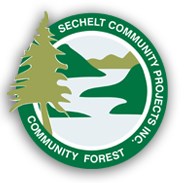A stretch of cool rainy weather in mid-May has allowed the Coastal Fire Centre to drop the wildfire danger rating to low for the Sunshine Coast, but the season has already gotten off to a busier start than last year.
As of May 15 there had been 27 wildfires in the Coastal Fire Centre, including two on the Sunshine Coast, and all were person caused. By the same time last season there had been 13 fires in the Coastal zone.
2017 and 2018 were record-setting wildfire seasons in B.C., and experts are predicting the 2019 season could be equally severe. The Canadian Forest Service said in a recent briefing that current forecasting models show above-average fire danger and severity for most of B.C. from June onwards.
Wildfire risk was also a major theme of operations manager Dave Lasser’s comments at the Sunshine Coast Community Forest AGM on May 13.
“In Sechelt, we had about four continuous weeks of extreme, Danger Class 5 fire hazard in August of 2018,” Lasser noted in his written report to the Community Forest board. “That is the longest continuous period I’ve experienced in my career on the Coast. Combined with our local water restrictions, we were poised for a disaster had a forest fire started locally.”
Lasser said the risk of fire remained high well into last fall, and a small fire flared up in October, likely caused by a spark from a chainsaw as someone was cutting firewood. Fortunately, the fire was spotted quickly and put out before gusty winds pushed it into the standing trees.
“We’ve been lucky to avoid the catastrophes that have occurred in the Interior,” Lasser said.
Lasser also announced that the Community Forest is ready to launch a significant community awareness campaign around wildfire dangers in the urban interface areas of the Sunshine Coast, starting with a public presentation from four experts June 10 at Chatelech Secondary School in Sechelt.
Lasser told Coast Reporter the speaker lineup will include Bruce Blackwell, who assisted with the Filmon report on the devastating 2003 fires in Kelowna.
The other presenters will be: Lori Daniels, a professor of forest ecology at UBC and expert in the impact of climate change on forests; Brian McNaughton, a former district manager with the provincial forests ministry and general manager of the Federation of BC Woodlot Associations; and Stephan Martineau, president of a community forest in the Slocan region who worked on “fuel treatment” projects on his area.
The session will be recorded by Eastlink Community TV for broadcast and use as the basis for later presentations in Pender Harbour, Roberts Creek, Halfmoon Bay and Gibsons in conjunction with Elder College.
The quartet of experts will also hold sessions for local government officials and fire departments.
Lasser said one of the goals is to get private landowners involved in wildfire prevention, and to encourage local governments to enact bylaws that encourage that involvement.
Earlier this year, Sunshine Coast residents had a chance to hear from Gibsons-based wildfire expert Al Beaver, who runs the consulting firm Wildland Fire Risk Management Limited.
Beaver, who’s been studying and fighting wildfires for more than 40 years, gave a well-attended presentation at the Heritage Playhouse that included a look back at the 1906 fire that burned an area from what is now Leek Road in Roberts Creek through upper Gibsons and the 2015 Old Sechelt Mine fire.
In an interview for Coast Reporter Radio, Beaver said he doesn’t think Coasters have a deep understanding of the risks of wildfires in the area, and overall the region is not as well prepared as it should be.
He also said part of the reason is that the nature of fire seasons has been changing faster in coastal B.C. than many other parts of North America as the area becomes more prone to long periods of drought.
“If you took all the development away [and started fresh] we would build things very differently than what we have, so we have a legacy of literally no [urban] planning around wildfire… The FireSmart Canada program has only been in existence since 1997, so the idea of planning and laying out your subdivisions [with wildfires in mind] has never been done.”
A resolution from the recent Southern Interior Local Government Association conference said provincial governments have “significantly underfunded mitigation programs” and “the current wildfire management strategy is overly reliant on FireSmart, placing wildfire risk mitigation at the homeowner level.”
The Town of Gibsons was recently awarded an $8,295 grant to work on FireSmart-related planning, but the Town hasn’t said yet how the money will be used.
Beaver said he thinks both approaches need to be emphasized, and making your own property FireSmart compliant is critical because it could make a key difference in how an interface fire spreads and how easy it is to fight.
“Be prepared. There’s lots of information [available] … and seek advice if you’re not sure. Have a plan.”
You can hear our interview with Al Beaver on Coast Reporter Radio episode 146, “Political bombshells and wildfire season,” at www.coastreporter.net/audio



